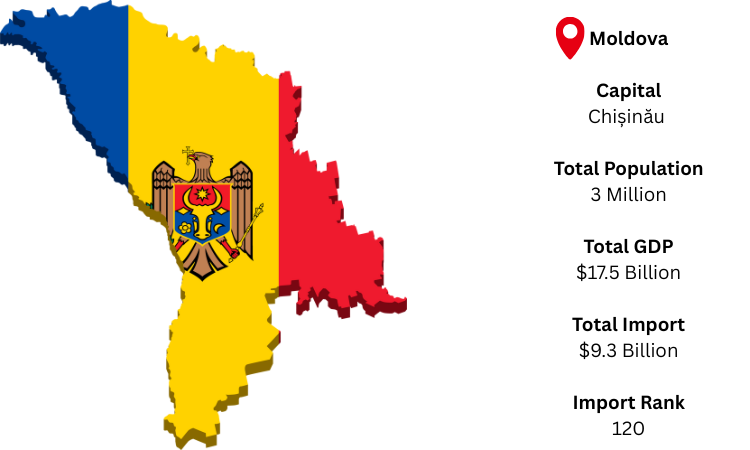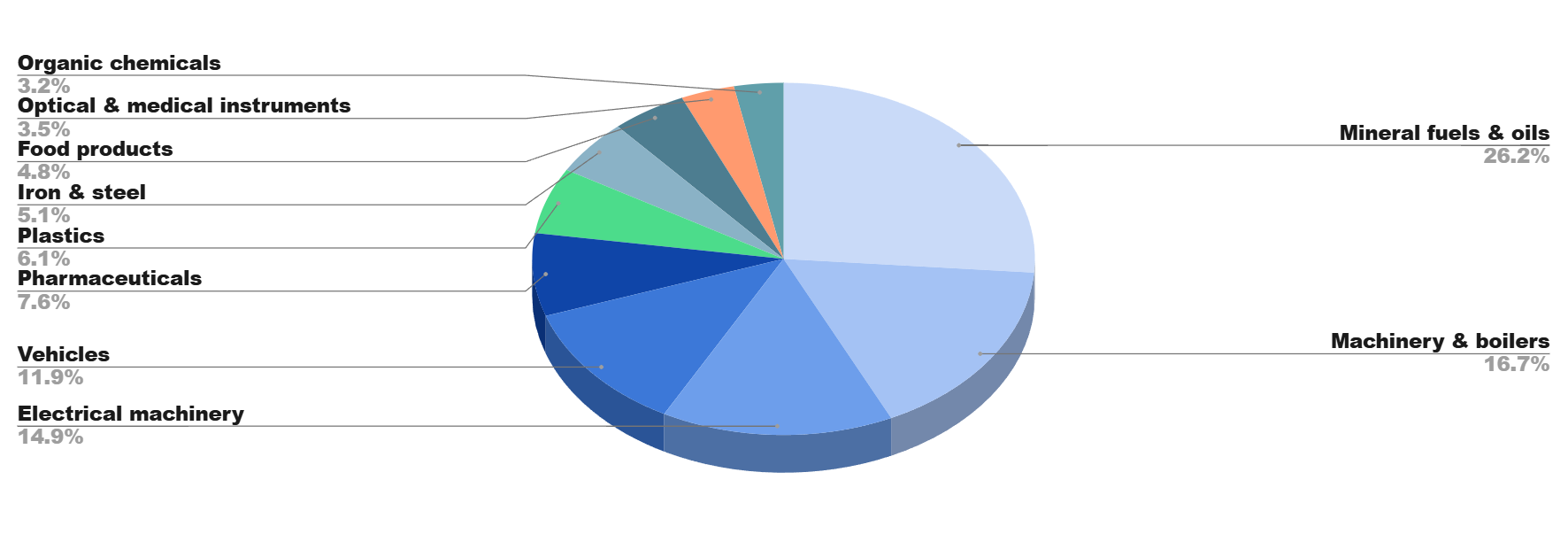Moldova is a landlocked nation in Eastern Europe that shares borders with Ukraine and Romania. Chișinău serves as its capital. The GDP of Moldova was approximately USD 17.5 billion in 2024, based on Moldova shipments data. Moldova's imports totaled USD 9.3 billion, placing it 120th in the world according to Moldova import data. Mineral fuels and oils were the most popular imports, and Romania was its top import partner.



